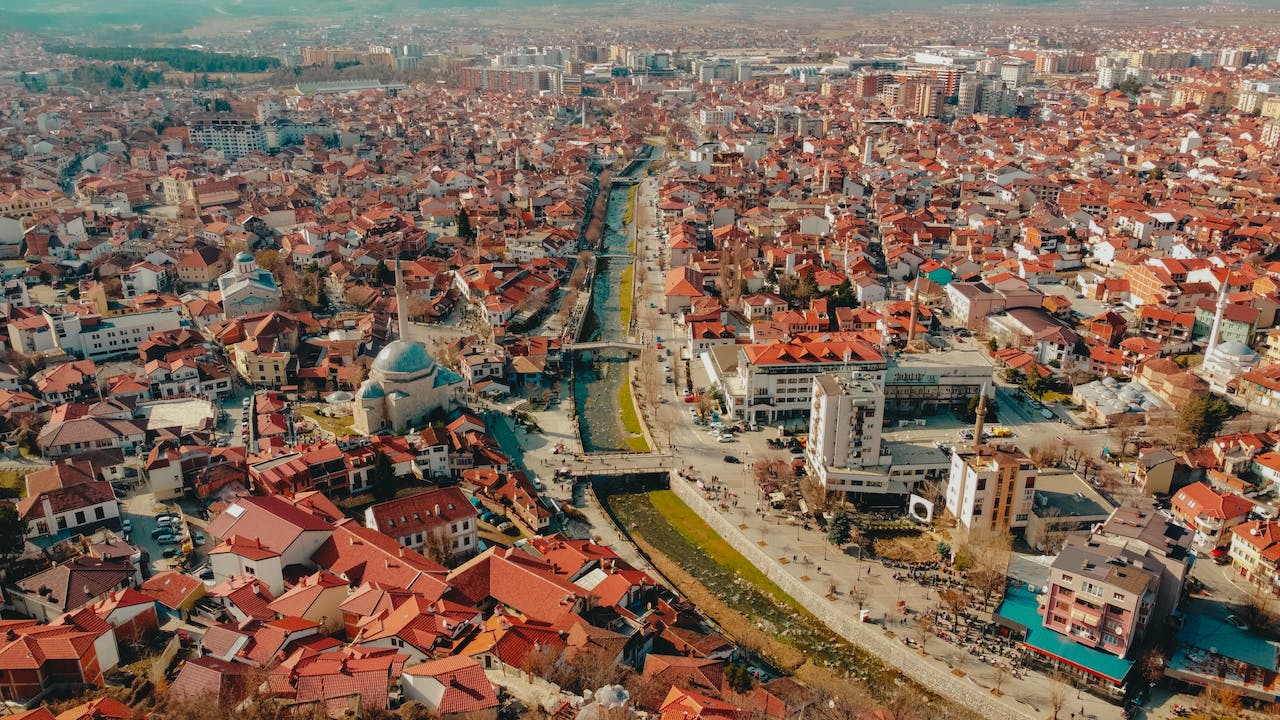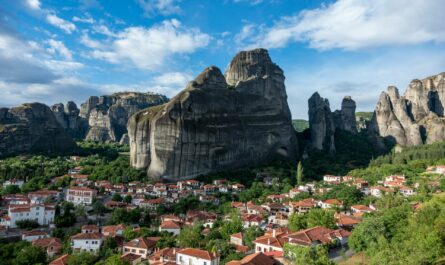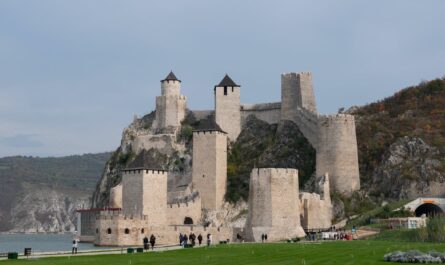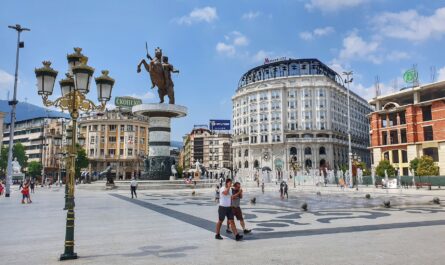Nestled in the heart of the Balkans, Kosovo stands as a testament to a rich and diverse cultural history. Among the many layers of its past, the Ottoman Empire left an indelible mark on the region, shaping not only its political landscape but also its architectural identity. Nowhere is this more evident than in the charming city of Prizren, where the echoes of Ottoman grandeur resound through its historic architecture.
The Ottoman Influence
The Ottoman Empire, spanning several centuries, played a crucial role in shaping the cultural and architectural landscape of Kosovo. As one of the empire’s prominent territories, Kosovo experienced a significant infusion of Ottoman architectural styles, which blended seamlessly with existing traditions, creating a unique synthesis.
Prizren, a city with a history dating back to ancient times, became a prominent center during the Ottoman rule. The Ottoman influence is particularly evident in the city’s mosques, bazaars, and residential structures. These buildings, characterized by their distinctive features, tell the story of a bygone era, preserving the essence of Kosovo’s Ottoman legacy.
Prizren’s Ottoman Mosques
Among the most iconic structures in Prizren are its Ottoman-era mosques. The Sinan Pasha Mosque, built in the 17th century, stands as a masterpiece of Ottoman architecture. Its elegant minaret and intricate floral motifs showcase the exquisite craftsmanship of the time. The mosque not only served as a place of worship but also as a symbol of the Ottoman Empire’s grandeur in the region.
The Mehmed Pasha Hamam
Another architectural gem from the Ottoman period is the Mehmed Pasha Hamam, a Turkish bathhouse that stands as a testament to the importance of communal spaces in Ottoman culture. The hamam, with its domed ceilings and ornate details, reflects the Ottoman emphasis on architectural aesthetics. Today, the Mehmed Pasha Hamam serves as a cultural heritage site, allowing visitors to step back in time and experience the grandeur of Ottoman bathing rituals.
The Stone Bridge and Bazaar
Prizren’s Ottoman legacy extends beyond religious and residential structures to include its bustling bazaar and the famous Stone Bridge. The bazaar, with its narrow cobblestone streets, echoes the vibrant commercial life of the Ottoman era. Merchants and traders once filled these alleys, offering a diverse array of goods and creating a lively atmosphere that still lingers in the air.
The Stone Bridge, connecting the old and new parts of the city, stands as a symbol of continuity and endurance. Built during the Ottoman period, it has weathered the passage of time, bearing witness to centuries of history.
Preservation Efforts
In recent years, there has been a renewed focus on preserving Prizren’s Ottoman heritage. Restoration projects, undertaken with care and precision, aim to protect these architectural treasures for future generations. Organizations and local communities collaborate to ensure that the city’s unique identity, shaped by its Ottoman past, remains a source of pride and inspiration.
Exploring Prizren’s Ottoman Legacy: Beyond Architecture
While the architectural wonders of Prizren’s Ottoman legacy are undoubtedly captivating, the city’s cultural and historical significance extends beyond its buildings. The Ottoman influence permeates various aspects of daily life and artistic expressions in Prizren, contributing to a rich and multifaceted heritage.
Culinary Delights
One cannot truly experience the Ottoman legacy in Prizren without indulging in its culinary delights. The city’s gastronomy bears witness to centuries of cultural exchange and fusion. Ottoman-inspired dishes, such as baklava, sogan-dolma, and various kebabs, continue to tantalize the taste buds of locals and visitors alike. Prizren’s vibrant food scene serves as a living testament to the enduring legacy of the Ottoman Empire’s culinary influence.
Cultural Festivals and Traditions
Prizren comes alive during cultural festivals that celebrate its Ottoman heritage. Events such as the Dokufest film festival and the Dita e Çajit (Tea Day) pay homage to the city’s diverse cultural roots. Traditional music, dance, and art, influenced by the Ottoman era, are showcased during these festivities, offering a unique glimpse into the living traditions that have persisted through the centuries.
Ottoman-Era Craftsmanship
The Ottoman period was a golden age for craftsmanship, and Prizren’s artisans continue to carry on these traditions. Local workshops produce intricate copperware, handwoven carpets, and ornate woodwork reminiscent of Ottoman design. Visitors can explore these workshops, witnessing the meticulous craftsmanship that has been passed down through generations.
Educational and Religious Institutions
The Ottoman legacy in Prizren also encompasses educational and religious institutions. The League of Prizren, established in 1878, played a pivotal role in the city’s history, advocating for the rights of Albanians within the Ottoman Empire. The league’s headquarters, now a museum, preserves the documents and artifacts that tell the story of this important chapter in Prizren’s past.
The Albanian League of Prizren Complex, including the league’s mosque and library, stands as a reminder of the intellectual and religious contributions of the Ottoman period. These institutions served as centers for education, fostering a sense of community and intellectual exchange.
Community Resilience
The Ottoman legacy in Prizren is not just about structures and artifacts; it is about the resilience and adaptability of the local community. Over the centuries, Prizren has endured periods of change, conflict, and transformation. The Ottoman legacy serves as a foundation upon which the people of Prizren have built a resilient and diverse cultural identity.
Preserving the Ottoman Legacy: Challenges and Triumphs
While the efforts to preserve Prizren’s Ottoman legacy are commendable, the journey has not been without its challenges. Economic pressures, urban development, and natural wear and tear pose ongoing threats to the city’s historic structures. However, the commitment to preservation has spurred initiatives and collaborations aimed at safeguarding Prizren’s cultural heritage.
Conservation Projects
Various conservation projects have been initiated to protect and restore Prizren’s Ottoman-era buildings. Local and international organizations, in collaboration with government bodies, work tirelessly to ensure that these architectural treasures are not lost to the ravages of time. Restoration efforts focus not only on the structural aspects but also on preserving the intricate details and craftsmanship that make each building unique.
Community Involvement
Preservation efforts in Prizren extend beyond professional conservationists to include active community involvement. Local residents, recognizing the value of their cultural heritage, actively participate in awareness campaigns, fundraising events, and educational programs. This sense of ownership and pride in the city’s Ottoman legacy fosters a collective responsibility to ensure its continued urvival.
Tourism and Sustainable Development
Tourism, while offering economic opportunities, also presents challenges to the preservation of historic sites. Striking a balance between promoting tourism and protecting cultural heritage requires thoughtful planning and sustainable development strategies. Prizren’s local authorities are working to implement measures that encourage responsible tourism, minimizing the impact on the city’s architectural gems.
Educational Programs
Educational initiatives play a crucial role in fostering an appreciation for Prizren’s Ottoman legacy among both locals and visitors. Schools, museums, and cultural institutions collaborate to develop educational programs that highlight the historical, architectural, and cultural significance of the Ottoman period. Guided tours, workshops, and exhibitions provide immersive experiences that deepen understanding and promote a sense of stewardship for Prizren’s heritage.
Challenges of Modernization
As Prizren undergoes modernization and urban development, striking a balance between progress and preservation becomes paramount. Local authorities grapple with the challenge of integrating contemporary infrastructure while respecting the historical fabric of the city. Creative solutions that blend the old with the new are being explored to ensure that Prizren evolves without sacrificing its unique identity.
Conclusion
Prizren’s Ottoman legacy is not a static relic frozen in time but a living, evolving narrative that requires continual care and attention. The challenges of preservation are met with dedication, innovation, and community involvement. As Prizren embraces the future while honoring its past, the Ottoman-era architecture serves as a bridge between generations, connecting the vibrant history of the Balkans with the aspirations of the present and the promise of the future. The ongoing efforts to preserve Prizren’s Ottoman legacy underscore the importance of safeguarding cultural heritage for the benefit of generations to come.




